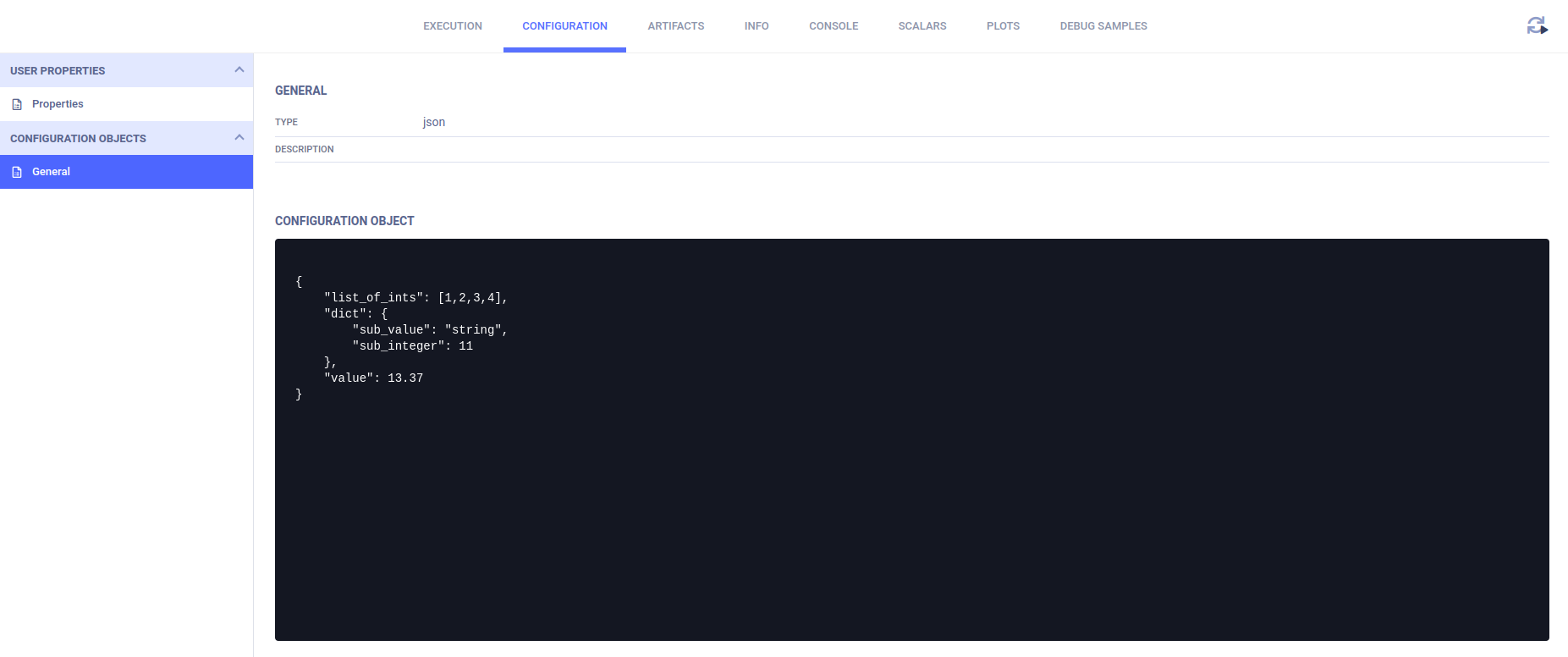2.5 KiB
| title |
|---|
| Configuring Models |
The model_config.py example demonstrates configuring a model and defining label enumeration. Connect the configuration and label enumeration to a Task and, once connected, ClearML tracks any changes to them. When ClearML stores a model, in any framework, ClearML stores the configuration and label enumeration with it.
When the script runs, it creates an experiment named Model configuration example, which is associated with the examples project.
Configuring models
Using a configuration file
Connect a configuration file to a Task by calling the Task.connect_configuration method with the file as an argument.
# Connect a local configuration file
config_file = os.path.join('data_samples', 'sample.json')
config_file = task.connect_configuration(config_file)
ClearML reports the configuration in the ClearML Web UI, experiment details, CONFIGURATION tab, CONFIGURATION OBJECTS area. See the image in the next section.
Configuration dictionary
Connect a configuration dictionary to a Task by creating a dictionary, and then calling the Task.connect_configuration method with the dictionary as an argument. After the configuration is connected, ClearML tracks changes to it.
model_config_dict = {
'value': 13.37,
'dict': {'sub_value': 'string', 'sub_integer': 11},
'list_of_ints': [1, 2, 3, 4],
}
model_config_dict = task.connect_configuration(model_config_dict)
# We now update the dictionary after connecting it, and the changes will be tracked as well.
model_config_dict['new value'] = 10
model_config_dict['value'] *= model_config_dict['new value']
ClearML reports the configuration in the ClearML Web UI > experiment details > CONFIGURATION tab > CONFIGURATION OBJECTS area.
Label enumeration
Connect a label enumeration dictionary by creating the dictionary, and then calling the Task.connect_label_enumeration method with the dictionary as an argument.
# store the label enumeration of the training model
labels = {'background': 0, 'cat': 1, 'dog': 2}
task.connect_label_enumeration(labels)
